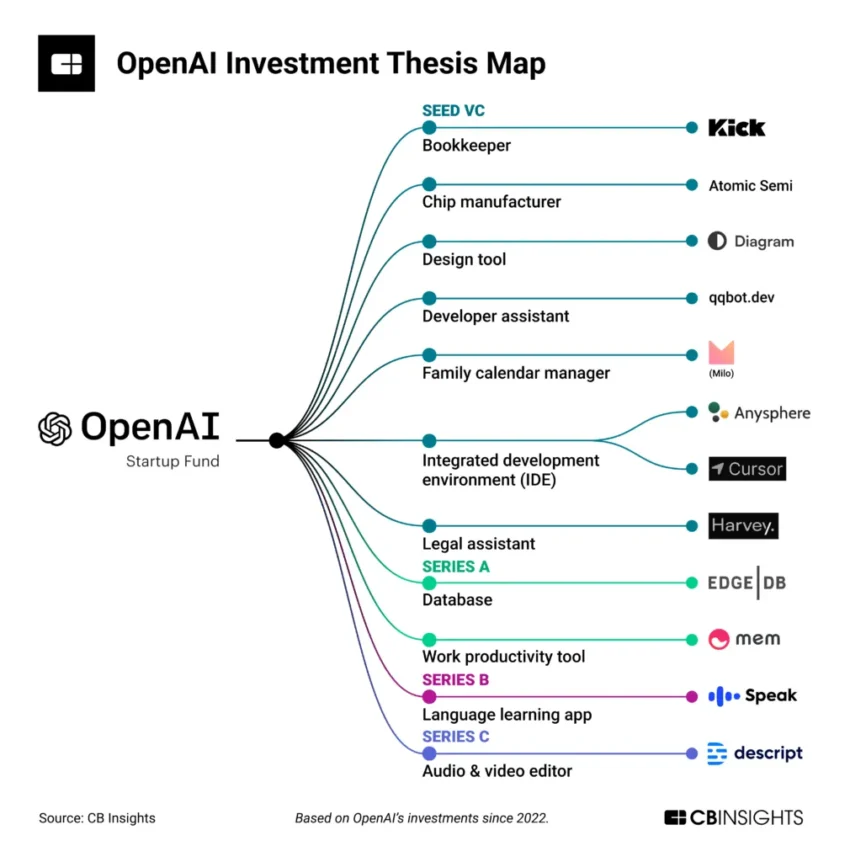OpenAI AI strategy is evolving as CEO Sam Altman recently revealed the company’s intention to adopt innovative approaches inspired by competitors like DeepSeek and Meta. During a Reddit AMA, Altman candidly addressed past missteps regarding model weights, acknowledging the potential benefits of learning from successful rivals. The success of DeepSeek’s cost-effective AI models has prompted a reassessment of OpenAI’s direction, particularly in terms of transparency and collaboration within AI development strategies. Altman emphasized the importance of showing reasoning steps in AI models, a feature that DeepSeek’s R1 model excels in, setting a new standard for user experience. With a growing recognition of the advantages of open-source AI, OpenAI is on the brink of a strategic transformation that may redefine its role in the competitive AI landscape, particularly as it considers integrating elements from Meta Llama models into its offerings.
The shifting landscape of artificial intelligence is prompting a reevaluation of strategies at OpenAI, with a focus on enhanced collaboration and insight-sharing. Sam Altman, the visionary behind the company, has openly discussed the need for a more open approach to AI development, inspired by successful methodologies from other industry players. Notably, the recent accomplishments of DeepSeek highlight the effectiveness of transparent reasoning in AI models, which contrasts with OpenAI’s historically proprietary stance. As the conversation around open-source AI gains momentum, the integration of principles from Meta’s Llama models could signal a new chapter for OpenAI. By embracing alternative AI development strategies, the company aims to foster greater accessibility and innovation in the field.
Sam Altman’s Vision for OpenAI’s Future
During a recent Reddit AMA, Sam Altman, the CEO of OpenAI, shared his insights regarding the company’s evolving strategies in AI development. Recognizing the competitive landscape, Altman emphasized that OpenAI is ready to adopt new approaches, particularly those demonstrated by DeepSeek and Meta. This willingness to pivot is indicative of a broader trend in the AI industry, where success often hinges on being adaptable and responsive to the successes of others. Altman’s acknowledgment of previous missteps, specifically regarding model weights, highlights a critical turning point for OpenAI as it seeks to redefine its role in AI advancement.
Altman’s statement, “we have been on the wrong side of history,” reflects a candid recognition of the need for OpenAI to embrace innovation and transparency. By considering strategies that have proven successful for competitors, such as DeepSeek’s approach to reasoning models, OpenAI aims to enhance user experience and foster a more collaborative environment in AI research. This shift could lead to more robust AI solutions that are not only powerful but also user-friendly, aligning with the demands of developers and companies looking to leverage AI technology effectively.
The Impact of DeepSeek AI Models on OpenAI’s Strategy
DeepSeek’s AI models have captured significant attention in the AI community due to their effectiveness and cost-efficiency. Altman noted that these models’ success serves as a valuable lesson for OpenAI, prompting a reevaluation of its own strategies. The ability of DeepSeek’s R1 model to break down complex tasks into smaller, understandable steps sets a new standard in AI reasoning. This approach not only enhances user engagement but also aligns with the growing demand for transparency in AI operations.
As OpenAI contemplates these advancements, it becomes clear that incorporating similar tactics could significantly improve its offerings. By integrating DeepSeek’s methodology of displaying ‘thinking tokens’ or intermediate reasoning steps, OpenAI can provide a more comprehensive understanding of its AI processes. This change could lead to a stronger market position, as users increasingly prefer tools that offer clarity and insight into their operations, further driving the adoption of AI technologies in various sectors.
Meta’s Open-Source Approach and Its Influence on OpenAI
Meta’s AI initiatives, particularly the Llama models, highlight the benefits of open-source AI frameworks. The accessibility of model weights and parameters allows developers and businesses to customize AI solutions to meet their specific needs. This strategic openness contrasts with OpenAI’s historically proprietary model, which has limited user engagement and adaptability. By learning from Meta’s success, OpenAI is considering a more open-source strategy that could facilitate collaboration and innovation in AI development.
Yann LeCun’s insights emphasize the importance of this open-source movement within the AI community. As more organizations recognize the value of sharing resources, OpenAI’s potential shift towards a more transparent model could redefine its relationship with developers and researchers. This newfound openness could encourage a collaborative environment, fostering innovation and accelerated advancement in AI technologies, ultimately benefiting the entire industry.
OpenAI’s Shift Towards Transparency in AI Development
OpenAI’s historical focus on proprietary models has sparked debates about accessibility and collaboration within the AI landscape. However, recent discussions led by Sam Altman suggest a significant shift towards transparency, particularly regarding model weights and research dissemination. This change is not only crucial for enhancing user trust but also for positioning OpenAI as a leader in ethical AI practices. By prioritizing transparency, OpenAI can engage more effectively with its user base, fostering a sense of community and shared purpose in AI development.
As OpenAI moves towards a more transparent approach, it may also encourage other organizations to adopt similar practices. This could lead to a more cooperative AI ecosystem where knowledge and resources are shared openly, spurring innovation and accelerating progress. Ultimately, this shift aligns with the growing demand for ethical AI practices and could help OpenAI regain its footing as a pioneering force in the AI industry.
The Role of Competitive Intelligence in AI Development
In the fast-paced world of AI, the ability to learn from competitors is vital for sustained growth and innovation. Altman’s acknowledgment of DeepSeek and Meta’s successful strategies reveals a keen awareness of the importance of competitive intelligence. By analyzing the strengths of rival approaches, OpenAI can identify gaps in its offerings and seize opportunities to enhance its own models. This proactive stance not only benefits OpenAI but also contributes to a more dynamic and competitive AI landscape.
The willingness to adapt and evolve in response to competitors is essential for any organization aiming to lead in technology. As OpenAI considers the implications of DeepSeek’s reasoning models and Meta’s open-source strategies, it can refine its own development processes to better address user needs. This iterative learning process can drive innovation and ultimately lead to the creation of more effective and user-friendly AI solutions.
User Engagement and AI Transparency
User engagement is increasingly becoming a focal point in AI development strategies. As AI models evolve, the importance of providing users with insights into how their systems work cannot be overstated. OpenAI’s plans to reveal intermediate reasoning steps represent a significant leap towards enhancing user interaction and satisfaction. By allowing users to understand the decision-making process of AI models, OpenAI can build a stronger rapport with its audience and encourage greater trust in its technologies.
Moreover, this transparency is not merely a trend; it reflects a broader movement within the tech industry towards accountability and ethical AI practices. By prioritizing user engagement through transparency, OpenAI can differentiate itself from competitors and establish itself as a leader in responsible AI development. This commitment to user-centric design will likely resonate with developers and organizations seeking AI solutions that are not only powerful but also comprehensible.
Learning from Success: Embracing New AI Models
The AI landscape is constantly evolving, and organizations must remain agile to harness new technologies effectively. OpenAI’s decision to explore DeepSeek’s and Meta’s models illustrates a commitment to learning from the success of others. By embracing innovative approaches, OpenAI can enhance its offerings and stay relevant in a rapidly changing market. This adaptability is crucial for maintaining competitive advantage and ensuring that its models remain at the forefront of AI development.
Moreover, the integration of successful methodologies from competitors can lead to breakthroughs in AI capabilities. By studying DeepSeek’s efficient reasoning models and Meta’s open-source frameworks, OpenAI can develop more robust solutions that meet the diverse needs of users. This willingness to learn and evolve not only benefits OpenAI but also contributes to the overall growth of the AI sector, fostering a collaborative environment for all stakeholders.
The Future of Proprietary versus Open-Source AI
The ongoing debate between proprietary and open-source AI models is becoming increasingly relevant as organizations evaluate their development strategies. OpenAI’s historical reliance on proprietary models has raised questions about accessibility and innovation. However, the potential shift towards an open-source approach could redefine the landscape, allowing for greater collaboration and customization. As Altman noted, this change is not just about following trends but about recognizing the benefits that open-source models can provide.
The challenge lies in balancing the need for proprietary protection with the advantages of open access. By carefully navigating this landscape, OpenAI can position itself to leverage the strengths of both models. This dual approach could lead to a more inclusive AI development environment that encourages innovation while still safeguarding the company’s intellectual property. Ultimately, the future of AI may depend on organizations finding this balance, fostering a culture of collaboration that drives the industry forward.
The Importance of Collaboration in AI Development
Collaboration is increasingly recognized as a vital component of successful AI development strategies. The rapid pace of technological advancement necessitates a cooperative approach, where organizations can share insights, resources, and expertise. OpenAI’s potential shift towards more open-source practices reflects a growing understanding that collaboration can lead to better outcomes for all stakeholders involved. By working together, organizations can address common challenges and accelerate the development of innovative AI solutions.
This collaborative spirit is not only beneficial for companies like OpenAI but also for the broader AI community. As developers and researchers come together to share knowledge and tools, the entire industry can advance more quickly and effectively. By fostering an environment where collaboration is prioritized, OpenAI can help to establish best practices and drive the responsible development of AI technologies that benefit society as a whole.
Frequently Asked Questions
What is OpenAI’s AI strategy under Sam Altman?
OpenAI’s AI strategy under Sam Altman focuses on embracing innovative approaches from competitors, such as DeepSeek’s AI models and Meta’s Llama models. Altman acknowledges the need for OpenAI to adapt its strategies, particularly in the context of open-source AI, to remain competitive and address past shortcomings.
How is OpenAI planning to integrate DeepSeek AI models into its strategy?
OpenAI plans to integrate DeepSeek AI models by learning from their successful reasoning techniques, which provide users with detailed, step-by-step processing. This shift reflects OpenAI’s commitment to enhancing user experience and transparency in AI model interactions.
What lessons has OpenAI learned from Meta’s Llama models?
OpenAI has learned the importance of open-source AI development strategies from Meta’s Llama models, which offer transparency through accessible weights and parameters. This insight is prompting discussions within OpenAI about potentially adopting more open-source practices in their AI offerings.
Will OpenAI release any of its model weights in the future?
While OpenAI has historically maintained a proprietary stance, Sam Altman indicated that there are discussions about releasing some model weights and research in the future. This suggests a potential shift towards a more open-source AI strategy.
What are the advantages of open-source AI models according to OpenAI’s strategy?
According to OpenAI’s evolving strategy, the advantages of open-source AI models include increased accessibility, customization for developers, and the ability to foster collaboration within the AI community. This approach contrasts with proprietary models that restrict access and modification.
How does OpenAI’s approach to transparency differ from DeepSeek’s AI models?
OpenAI’s current approach to transparency is limited, as users only receive final answers without intermediate reasoning steps. In contrast, DeepSeek’s AI models, such as R1, provide a transparent breakdown of reasoning processes, which OpenAI aims to emulate in future updates.
What impact does Sam Altman’s leadership have on OpenAI’s AI development strategies?
Sam Altman’s leadership significantly influences OpenAI’s AI development strategies by promoting adaptability and openness to new ideas. His acknowledgment of past mistakes and willingness to explore competitors’ successful models reflects a forward-thinking approach in a rapidly evolving AI landscape.
How might OpenAI’s strategy evolve in response to competition?
OpenAI’s strategy may evolve to include more open-source elements and transparent practices as a response to competition from companies like DeepSeek and Meta. By embracing successful elements from rival AI strategies, OpenAI aims to enhance its offerings and remain relevant in the industry.
| Key Point | Details |
|---|---|
| Embracing New AI Approaches | OpenAI plans to adopt AI strategies from DeepSeek and Meta. |
| Acknowledgment of Past Mistakes | Sam Altman admits OpenAI has been on the wrong side of history regarding model weights. |
| DeepSeek’s Success | DeepSeek’s models are powerful and inexpensive, prompting OpenAI to reconsider its strategies. |
| Reasoning Models | OpenAI’s current models do not share intermediate reasoning steps, unlike DeepSeek’s R1 model. |
| Potential Shift to Open Source | Altman suggests that OpenAI may need to adopt an open-source model strategy, following DeepSeek’s approach. |
| Meta’s Open Source Strategy | Meta’s Llama models are partly open-source, allowing for customization by developers. |
| Future Discussions on Transparency | There are ongoing discussions about releasing some model weights and research for better transparency. |
Summary
OpenAI AI strategy is evolving as CEO Sam Altman embraces new approaches from competitors like DeepSeek and Meta. This shift signals a significant change in how OpenAI may operate, particularly regarding transparency and open-source models. The company recognizes past missteps and is exploring ways to provide more detailed insights into AI processes, which could enhance user understanding and trust. As OpenAI moves forward, it aims to align with successful models in the industry, potentially leading to a more collaborative AI development landscape.






